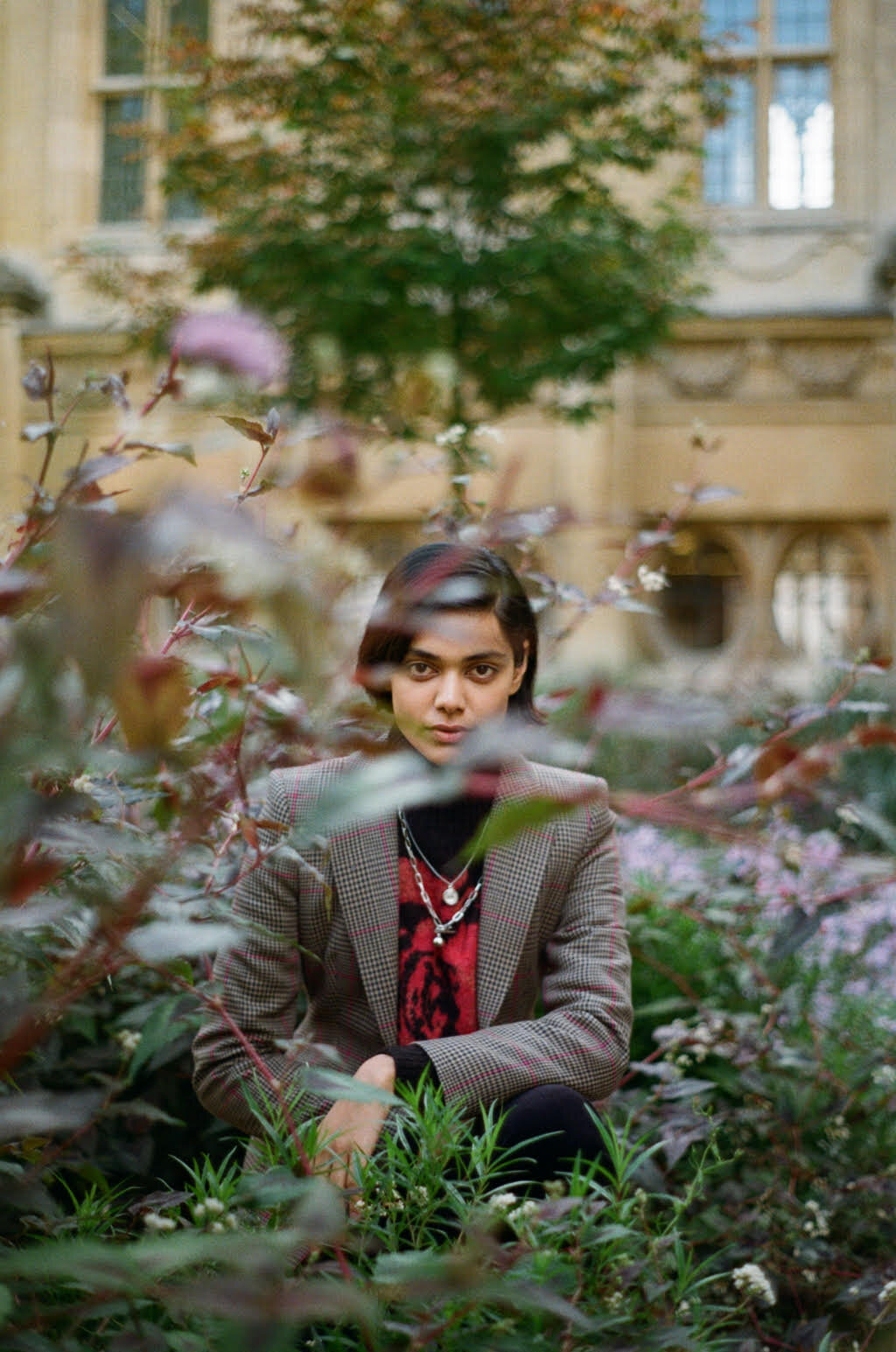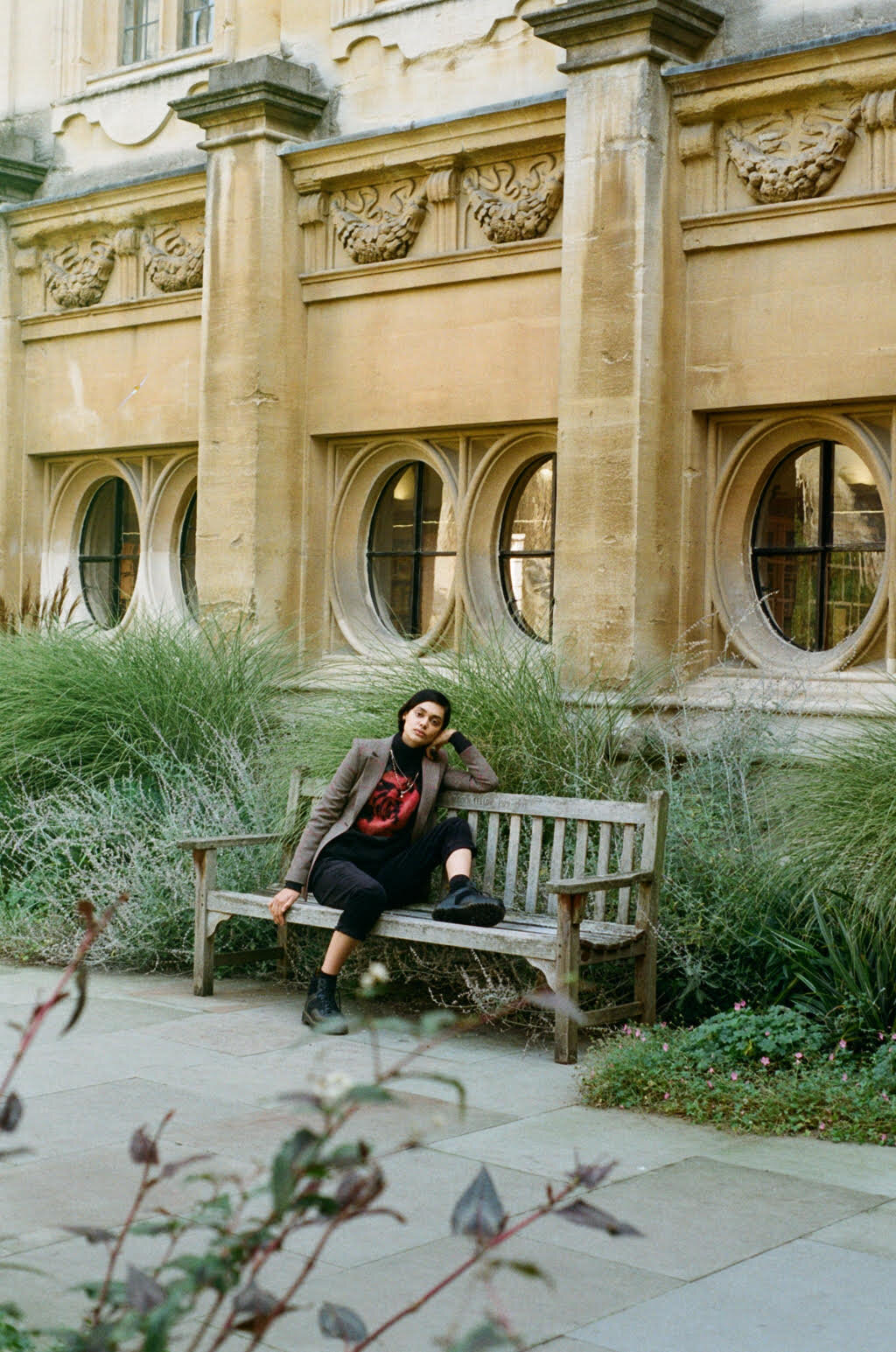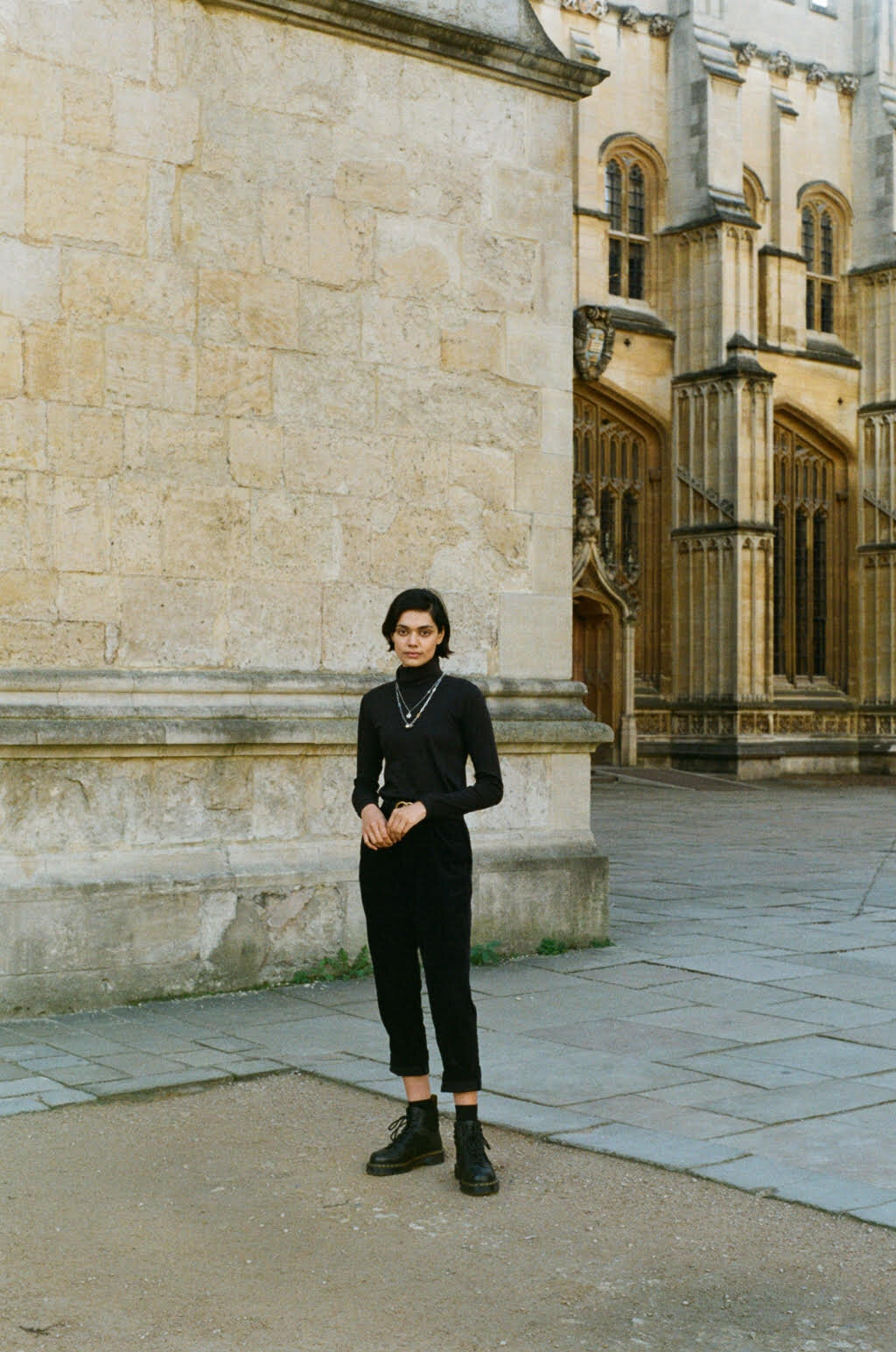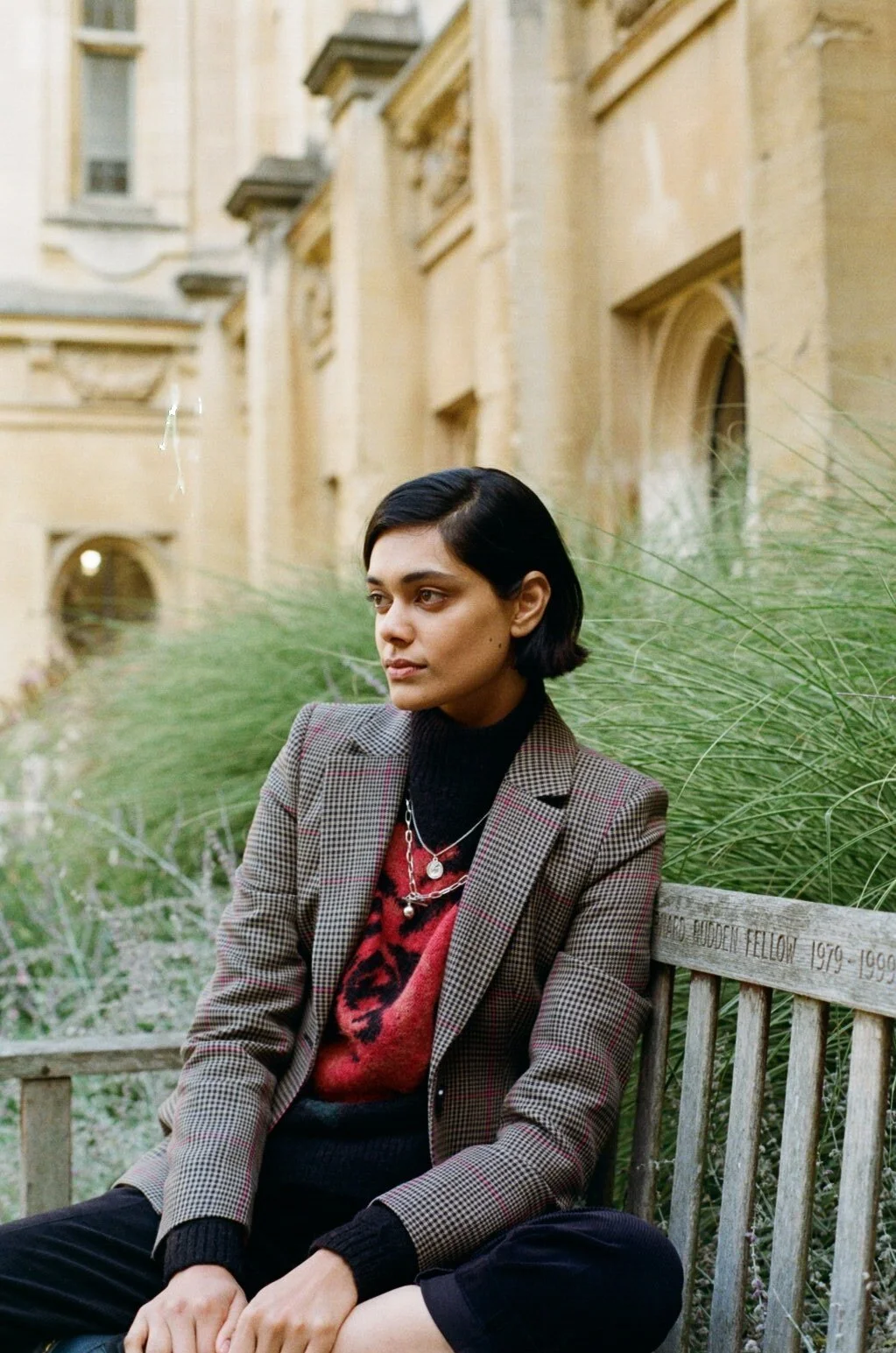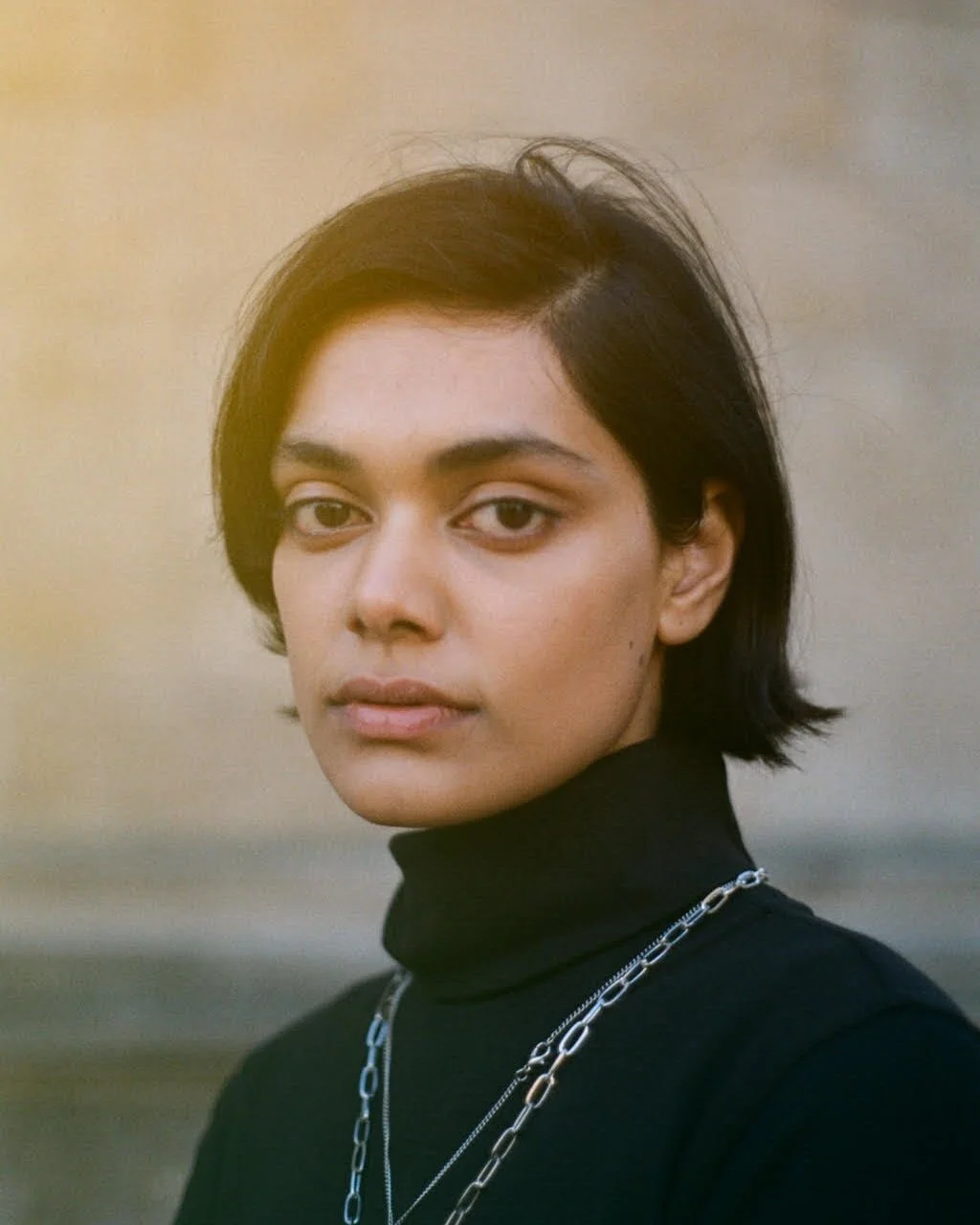Zinnia Kumar
Published Scientist, activist & model
Even though Zinnia Kumar is only 27 years old, she seems like an old soul, erasing stereotypes and proving that you can actually get from zero to hero, if you just get up and try. There isn't just one word to describe what Zinnia does as labels seem ridiculously meaningless when it comes to a big, generous personality like hers. We can name a few just for you though: a model, filmmaker, actress, conservation biologist, published scientist, philanthropist and activist — the list doesn't stop here, it continues.
Obviously it's not for nothing that Kumar has been included in Vogue India's list of 50 most influential global Indians this year.
What we find really interesting is the way Zinnia sees her modelling career, with high-profile modelling gigs only being stepping stones on the way to spreading her message about body positivity, diversity, colourism and other vital issues less fortunate and privileged of us have to face on a daily basis.
Tell us a little something about your journey and your career trajectory
I couldn’t say any part of my career was terribly planned.
I grew up in Cabramatta at the height of the drug trade, we lived in a flat and my parents struggled to make ends meet. My earliest memories of primary school are stepping over passed out heroin and cocaine addicts in the stair-well of our building. I had to be extra careful not to step on any used needles. We later moved to Liverpool, NSW. The year I graduated, my high school was ranked the worst in the state (no. 908). The odds were already against me. Located in a deprived area and classified as a ‘disadvantaged school’, it would be good if I even finished school, let alone went to university. Doubt was already there, I was used to being told “you’re not good/rich/smart enough”, “you’re from a shit school” and “Is this even possible for you?”. I’d genuinely settled on non-progressive career routes because I had no sense of self-worth after years of bullying. However, my chemistry teacher saw something in me I didn’t see in myself. She told me that I had such potential and that I could be anything I wanted. I was teary eyed, moved and very grateful. It was the first time anyone had ever said that to me.
Determined, I self-learned courses in the library and graduated as DUX (valedictorian). I got into University, I thought it was some accident because I obviously wasn’t supposed to. I loved Science and excelled at it. One of a handful of students, I made it to honours year and heard from other students their parents were academics who helped them with their essays. I unlike the others, was the first to go to university in my family. With financial difficulties at home, I took on two jobs whilst travelling 4-5 hours a day to university and back unable to afford on campus accommodation. Some days I was so exhausted I couldn’t get out of bed. Visions of a better existence than the one I had kept me self- motivated. I graduated university with First Class Honours in Ecology and two publications. One publication genuinely had me surprised it was covered by Time, BBC, Discovery, and Forbes. I worked with Little blue penguins on remote Islands and Wetland birds in the remote Australian Outback as a conservationist and it was my dream job. Until I became allergic to Eucalyptus, my career took a different turn and I ventured into Human Evolutionary Biology (Study of Human Behaviour).
At some point during that time, I had been scouted by an English Casting director in Sydney. It took me a month to get the courage to go into the agencies in Sydney with the card he gave me. I was rejected by every single one on the basis of my race. I was told everything from “have you thought about modelling in your own country?” – Vivienne’s & Chic, “We only take Anglos or half-Anglos”- Viviennes, ‘Indian’s don’t work here’ – IMG to flat out laughter by some nasty agents at Chadwicks. I left feeling humiliated, ‘othered’ and wished I could magically change my race despite being born in Australia. I had never experienced so much racism & discrimination in one day. Subsequently I forgot about modelling.
Anyway, after all those racist & weird experiences I decided I wanted nothing to do with the media industry. In between I travelled across Asia, became a Youth Ambassador for the Department of Foreign Affairs, taught English in Thailand, India and meditated in mountain temples. Teaching in Thailand and seeing the ads in Asia made me realise that skin colour discrimination & skin bleaching were related to the exploitation of women & children who feared being rejected by society because of their skin colour. An idea equating social worth & marriageability with skin colour. A colonial ideal borne in the Victorian era related to primitivism, white elitism spread via the globalisation of beauty out of Europe at the turn of the 19th Century.
This inspired me to translate what I had experienced across Asia and start in depth research on the topic of Colourism, with very little research existing in the academic landscape, I wanted to answer a lot of questions but also bring a truth to the discrimination. My studies are ongoing, and I matriculated at Brasenose College, University of Oxford on an MPhil in Modern South Asian Studies. I am currently also working on a Social Justice & Human Rights Documentary Feature Film which is becoming a full-time project.
You grew up in Australia. But you strongly identity to your South Asian heritage, are you able to share more?
I think after my racist experiences in the Australia fashion industry, I thought my South Asian identity was something to be ashamed of. I really started to connect with my South Asian roots when I started to decolonise the narrative around South Asians. I began to explore my South Asian identity not from a contemporary culture sense but from a historical sense. That’s when I started to realise how much of the knowledge we knew on India & South Asia had been re-written from a colonial perspective. E.g 39,000 Australian & NZ personnel were killed in WW2 and we hold memorials each year to remember those lost, but what history has forgotten & no memorials are held for is the 2.3 million Indian soldiers recruited and the 87,000 that lost their lives. That too at a time when they were not even granted equal rights. The further I got into it, the more I realised how much historical bias existed. Furthermore, had Britain not funded itself from the riches it looted from India (taking India’s GDP from 24.4% in 1700 to 4.2% in 1950) to form colonies overseas, Australia & New Zealand would have likely been French Colonies (just like our neighbour New Caledonia).
Instead of trying to connect my outward self with contemporary South Asian cultures dependant stereotypes, I found another way to connect with my identity through shared heritage and shared empowerment. My pen as my weapon.
“Instead of trying to connect my outward self with contemporary South Asian cultures dependant stereotypes, I found another way to connect with my identity through shared heritage and shared empowerment. My pen as my weapon.”
From working in the fashion and beauty industry as a model, we would love to know the changes you would like to see in the industry in the future, especially from a poc point of view?
1) Beauty product marketing that advertises the fake illusion of diversity.
Ads with 10 or 15 different models of various ethnic groups. Consumers assume that a particular shade will fit them because it is represented by someone that looks like them, of their ethnic group (e.g Indian Girl sees Indian model in ad). Consumer then tries on product and it doesn’t match her undertone. Unbeknownst to the consumer the brand did not tailor the foundation to the model, but the model was tailored to the foundation using photoshop e.g turning a model’s yellow undertones red in postproduction. Meaning what is being advertised doesn’t necessarily match the ethnic group it is being advertised on, controversially creating the illusion of product diversity which does not exist in real life.
2) Greater body shape diversity within clothing size ratios to stop alienating Non-European women.
The history of Clothing sizing & measurement has its origins with European men & women’s actual body shapes. Clothing sizes beside getting wider and longer have proportionately not changed from this European reflection in the West. Clothing derived from Europeans women’s standards make women from ethnic groups with wider hips and thighs (e.g South Asian, Middle Eastern & women in parts of Africa), assume they are ‘bigger’ by 1 to 2 sizes on the bottom than the top. However, the reality is if modern clothing & clothing sizes had been invented by women outside of Europe e.g India or parts of Africa, European women would be under the impression that their bottom half was 1 to 2 sizes too small on the bottom –prompting a desire to increase bottom size to meet the socially desirable standard. In the 90’s & 00’s non-European women underwent liposuction to reduce their bottom size to emulate the ‘perfect’ celeb bodies of the time such as Pamela Anderson, Elle McPherson & Cindy Crawford. With the rise of non-European body shapes in popular culture, the paradigm has now shifted to European women (e.g Kylie Jenner) emulating the proportionately wider hips and thighs, of non-European women. However, despite a popular culture shift, non-European body shape diversity within clothing sizes remains unacknowledged. E.g a size 8 for a European Woman would not be proportionate to a size 8 for an Indian or Middle Eastern woman. Which is why many non -European women struggle to ever find jeans that fit – their body shape was never taken into account by the retailer.
3) Brands & casting directors continue to stay within the body shape ratios.
Originally derived from measuring European bodies. This may account for the high preference for mixed-race European ethnic models amongst casting directors, who continue to look for European body ratios with ethnic faces & skin tones. Until the clothing size ratios change, native South Asian and Middle Eastern women among others, will systematically continue to be ‘punished’ and excluded representationally from the fashion industry, for having bodies that vary from European ratios. Reflecting a more nuanced relationship with European Idealism.
Your thoughts on tokenism and representation?
There are over 1.9 billion South Asians in the world, that number rises to well over 2 billion when you count in diaspora populations. India alone is set to overtake China as the most populous country in the globe in 2 years’ time. Despite all the stats tokenism, lack of representation & orientalism is still a big problem in South Asian representation in the west. Despite a slight increase in representation of South Asian female models in 2016 amongst the 10 most lucrative luxury brands in the world, South Asian representation has returned to its former abysmal levels e.g Chanel SS20 show did not feature a single South Asian Model. Furthermore, casting preferences have changed back to pre 2014 where part-European South Asians with European features are preferred over native female South Asians e.g Dior, Prada & Gucci did not feature any native South Asians. Problematic for representation in a multitude of ways, such as not selecting South Asian body shapes, features or qualities such as hyperpigmentation, and instead preferring lighter hair, lighter eyes, lower hair density, red based undertones, narrow hips and wider ribcages – all European features.
Your working on few exciting projects. How do you stay focused and overcome creative blocks?
Remember why I’m doing something in the first place. Sometimes, if what I’m doing doesn’t align with my future goals, I will stop doing that altogether.
Watch motivational videos.
What’s your personal style like?
I’m a minimalist, so I don’t like owning too many things. I like to have key practical basics that I usually pair up with combat boots.
Beauty routine
I actually have Eczema and Atopic dermatosis and I am allergic to plants from the Myrtaceae family such as Eucalyptus & Tea Tree, Apricot Kernel Oil and a few other common plants. Even though I have tried high end & low-end products, I prefer to use products in their simplest form with the least number of plant extracts & scents to avoid flareups. Please note I’ve spent hours trawling through scientific journals to find things that genuinely work. So, this is probably not your typical model list…
Daily/weekly use:
100% Pure Almond Oil (which I purchase wholesale from a farm) — I put this in a dropper and use it as a moisturiser when I’m at home;
100% Pure Anhydrous Lanolin which I mix with a touch of Almond Oil & Patchouli oil (again wholesale from a farm) — I use this as a lip and under eye moisturiser before bed;
Weleda Skin Food (original) Daily Cream especially in winter — great base for under foundation;
E45 Itch Relief Cream. It has something numbing in it, so if I have a dermatitis flare up, I switch to this cream instead of the Skin Food — gets rid of the sore spots;
Goat Milk Soap or Volcanic Pore Cleansing Foam by Innisfree – daily facewash, I interchange between the two;
Innisfree Super Volcanic Pore Clay Mask or Powdered Clay (they sell this in health food & nutrition stores) — applied as a quick face mask once a week;
Coconut Oil Hair Mask;
Mixture of Yogurt & ½ teaspoon of turmeric as a once a week face mask — I let it dry then wash it off;
Dry eyes: 20% Manuka Honey eyedrops I use this every second day — I brew my own daily using distilled water and 20% Manuka Honey applied with a dropper.
Special treatments:
Scars: each year during March & September a particular grass flowers which I am severely allergic to and will give me atopic dermatitis on my face. My skin type is prone to extreme hyper pigmentation so the scars from the flareup naturally take 5 months or so to fade. In order to speed up the process (fade them in a week) I personally do a 20% Salicylic Acid Face Peel (I use the one by Homepeel, except I don’t use the green herbs that come in the kit as I find the rubbing motion with acid too harsh, I just paint the acid on with a brush once and leave it for 7 minutes.) If you’re not experienced in peels, I highly recommend going to a dermatologist or aesthetician as you may end up causing hyperpigmentation. The peel is intense, so I take a few days off to avoid looking like a shedding lizard in public;
Hyperpigmentation Cover Up: I’m prone to hyperpigmentation around my mouth (desi skin ugh!) so I counteract this with Puiz Buin 50+ Mountain Sunscreen. If it starts to get too out of hand (like a hyperpigmentation moustache) a spot Salicylic Acid peel works well or 100% coverage concealers like my two favourites: 1) Dermablend Quick Fix Body Concealer (stick) or 2) Mac Studio Finish Concealer, which I apply after a colour Corrector (e.g Bobbi Brown Corrector in Peach or Medium to Dark Peach).
These are my two personal trick which I highly recommend:
Face & Body Hair: Being desi, I have high hair density (not just on my head). I use an eyebrow blade to remove the hair from my whole face. I prefer this over waxing as I don’t get ingrown & hyperpigmentation, plus makeup application is smoother especially if it is airbrushed on. Body wise, I had a couple of sessions of laser hair removal done years ago which resulted in a permanent reduction;
Eye Relaxing Face Yoga: There is a face yoga eye massage that I do before shoots. It helps loosen up the muscles around my eyes and instantly makes them feel relaxed and open. Skip to 3:16 if you just want the exercises.
Make up routine
I don’t wear makeup all that often. However, when I do, I think it’s really important to start with an exfoliated face and lips. If my skin is normal, I use Skin Food as my base cream, if it is having a dermatitis flareup I will use E45 Itch Cream as my base cream. I massage the cream in with my fingers for a minute of two. I colour correct under my eyes, side of nose, around mouth and on any spots. I personally use Bobbi Brown Intensive Moisturising Corrector in Peach or Medium to Dark Peach depending how much correction is required. Then I apply a little foundation with my fingers, I often mix the foundation on my hand with a little M.A.C Strobe Cream in Gold lite to give a dewy natural finish. My foundation shade varies based on the time of the year, but the shades that work for me are NARS Sheer Glow in Stromboli, Bobbi Brown 4, 4.5, 4.75, 5.75, 6. The .75 range has a nice yellow undertone if you’re South Asian.
If I have hyperpigmentation and need a 100% coverup I use Dermablends Quick Fix Body Concealer or MAC Studio Finish Concealer. I prefer Dermablends texture & coverage, however the shade range is quite narrow so I use MAC when I can’t find the right shade. A tiny dab of crème blush well blended (now Discontinued Bobbi Brown Cabo Coral 21). Mac Strobe Crème in Goldlite to the cheekbones.
Line my lips with MAC Spice or a Neutral lip liner. Curl my eyelashes – no mascara. Brush my eyebrows up – set with hairspray. If it is a special occasion then I will draw a cat eye using a pot eyeliner & brush or a pen eyeliner (NYX is great value!) and wear a lipstick favs are MAC Rebel, Taupe & LE Apricot Gold.
Finally bronze with Guerlain in No. 5 if it’s summer or simply set skin with Charlotte Tilbury Airbrush Flawless Finish Powder in No 2.
Your secret DIY health weapon
Spots, flareups & bumpy skin: This is a personal trick that makes a dramatic difference and reduces redness. At night wash your face, don’t put anything on your face. Then use this Silicone strip, it is used in hospitals for healing burns & fading c-section scars. However, I personally find it flattens dermatitis & pimples, reduces inflammation and rehydrates dry rash patches. I wear it overnight. I wash with soap & leave it to dry it after each use;
Pimples & spots: For individual pimples and spots that look like they’re about to pop. I put a Hydrocolloid patch on a.k.a pimple patch. I think you can find these in Korean & Japanese shops, I buy these online. They absorb all the liquid from the spot and reduce your chances of hyper pigmentation;
Ridiculous dry skin or skin that needs moisture: I have a little trick that I discovered in China, for an intense DIY moisturising treatment. You will need cling film, coconut oil and a thick face cream such as skin food or sorbolene (you can skip the cream if you want). Mix equal but generous amounts of face cream and coconut oil in the palm of your hand, lather it all over your entire face. Rip off bits of cling film and lay them on your face, leaving space for eyes, nostrils and a small hole for mouth so you can breathe and see. Leave it on for 30 mins to over an hour up to you. Take film off. Wipe face with paper towel – Glowing Magic! This treatment works especially well for my dermatitis before shoots;
Exfoliation: Once a week I exfoliate my face using a mixture of sugar that I’ve pounded with a mortar and pestle and a little honey mixed together in a teaspoon. I also exfoliate my body in a similar way and use a thick mixture of olive oil & sugar once a week, it moisturises and exfoliates at the same time.
Best advice
Everything you are, everything you have and everything around you is impermanent.
How do you keep fit
Resistance Training 2 or 3 times a week. Relax, eat ice-cream & meditate when I can.
A book that inspired you
Napoleon Hill – Think & Grow Rich
Top five tunes on your playlist
Here’s my top 6: Skindred – Kill the Power, White Town – Your Woman, Bonobo – Stay the Same, P!nk - Try, Dan Croll – From Nowhere, Alt J - Taro.
Thank you Zinnia! We love you.
Follow Zinnia on Instagram here
Interview — Zeenat Wilkinson
Photography — Ophelia King

